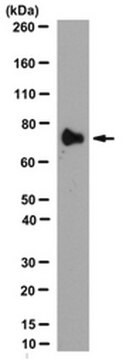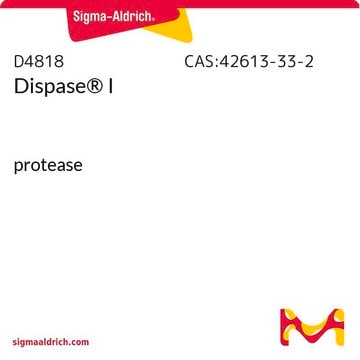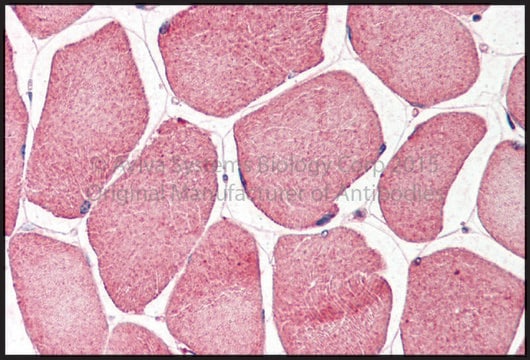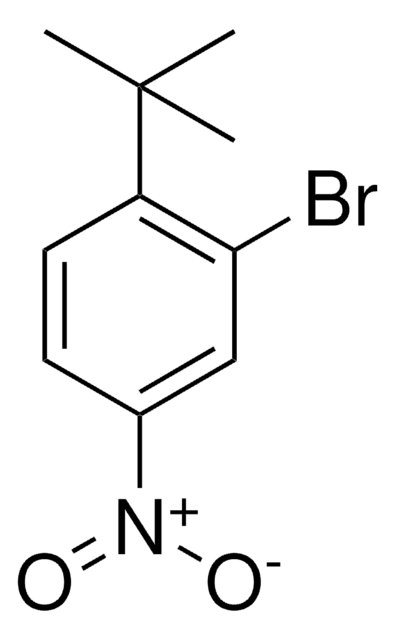MAB1581
Anti-Aggrecan Antibody
CHEMICON®, mouse monoclonal, Cat-315
Synonim(y):
CSPG
Wybierz wielkość
Wybierz wielkość
About This Item
Polecane produkty
Nazwa produktu
Anti-Chondroitin Sulfate Proteoglycan Antibody, Core Protein Epitope, clone Cat-315, ascites fluid, clone Cat-315, Chemicon®
pochodzenie biologiczne
mouse
Poziom jakości
forma przeciwciała
ascites fluid
rodzaj przeciwciała
primary antibodies
klon
Cat-315, monoclonal
reaktywność gatunkowa
feline, rat
producent / nazwa handlowa
Chemicon®
metody
immunocytochemistry: suitable
immunohistochemistry: suitable
immunoprecipitation (IP): suitable
western blot: suitable
izotyp
IgM
numer dostępu UniProt
Warunki transportu
dry ice
docelowa modyfikacja potranslacyjna
unmodified
informacje o genach
human ... ACAN(176)
Specyficzność
Immunogen
Zastosowanie
Immunocytochemistry: 1:500 on primary cultures of neurons.
Immunoblot: 1:5,000 recognizes a band at 680 kDa.
Immunoprecipitation.
Optimal working dilutions must be determined by the end user.
Informacje prawne
Nie możesz znaleźć właściwego produktu?
Wypróbuj nasz Narzędzie selektora produktów.
Kod klasy składowania
12 - Non Combustible Liquids
Klasa zagrożenia wodnego (WGK)
nwg
Temperatura zapłonu (°F)
Not applicable
Temperatura zapłonu (°C)
Not applicable
Certyfikaty analizy (CoA)
Poszukaj Certyfikaty analizy (CoA), wpisując numer partii/serii produktów. Numery serii i partii można znaleźć na etykiecie produktu po słowach „seria” lub „partia”.
Masz już ten produkt?
Dokumenty związane z niedawno zakupionymi produktami zostały zamieszczone w Bibliotece dokumentów.
Active Filters
Nasz zespół naukowców ma doświadczenie we wszystkich obszarach badań, w tym w naukach przyrodniczych, materiałoznawstwie, syntezie chemicznej, chromatografii, analityce i wielu innych dziedzinach.
Skontaktuj się z zespołem ds. pomocy technicznej








